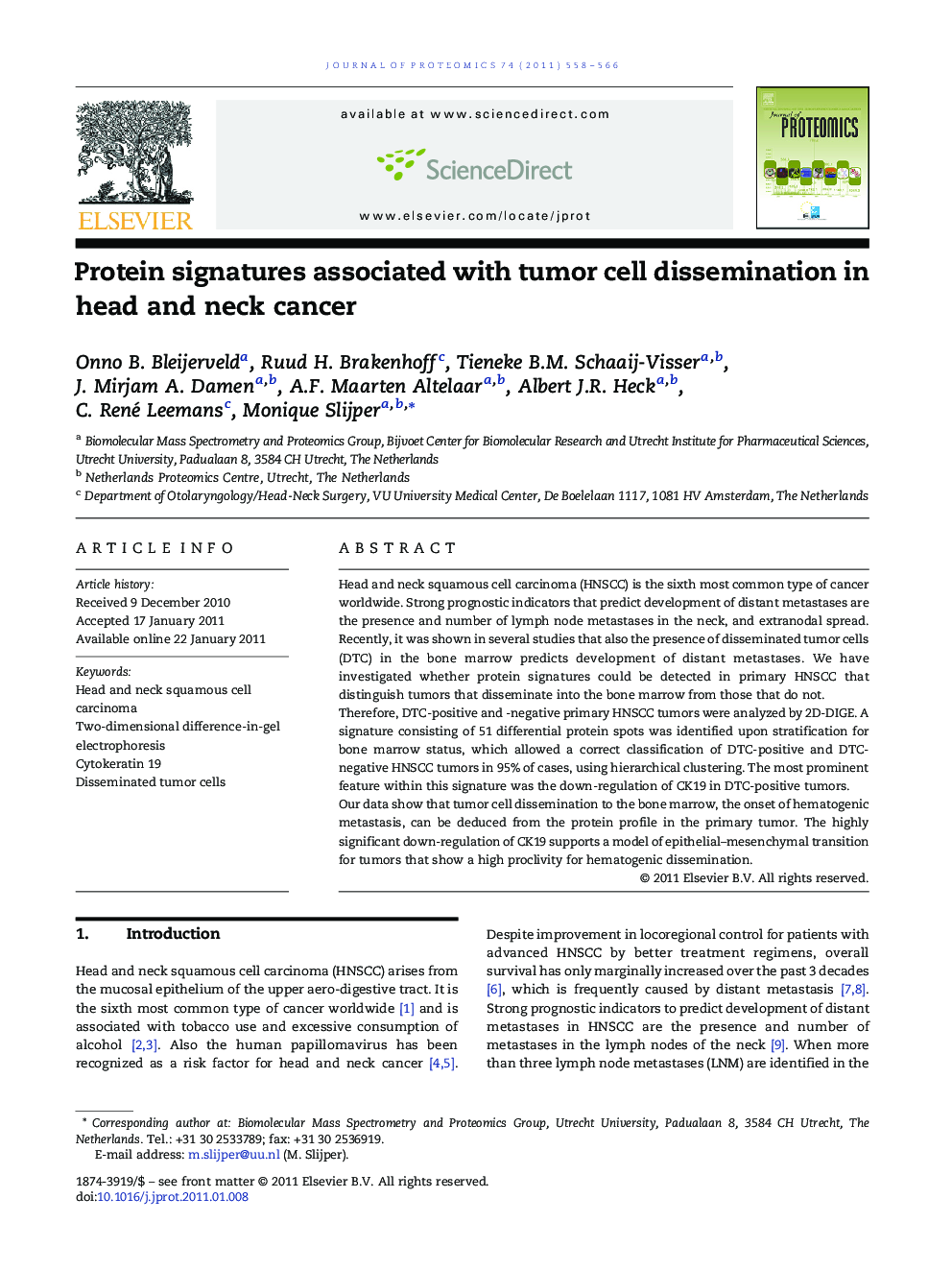| Article ID | Journal | Published Year | Pages | File Type |
|---|---|---|---|---|
| 1226555 | Journal of Proteomics | 2011 | 9 Pages |
Head and neck squamous cell carcinoma (HNSCC) is the sixth most common type of cancer worldwide. Strong prognostic indicators that predict development of distant metastases are the presence and number of lymph node metastases in the neck, and extranodal spread. Recently, it was shown in several studies that also the presence of disseminated tumor cells (DTC) in the bone marrow predicts development of distant metastases. We have investigated whether protein signatures could be detected in primary HNSCC that distinguish tumors that disseminate into the bone marrow from those that do not.Therefore, DTC-positive and -negative primary HNSCC tumors were analyzed by 2D-DIGE. A signature consisting of 51 differential protein spots was identified upon stratification for bone marrow status, which allowed a correct classification of DTC-positive and DTC-negative HNSCC tumors in 95% of cases, using hierarchical clustering. The most prominent feature within this signature was the down-regulation of CK19 in DTC-positive tumors.Our data show that tumor cell dissemination to the bone marrow, the onset of hematogenic metastasis, can be deduced from the protein profile in the primary tumor. The highly significant down-regulation of CK19 supports a model of epithelial–mesenchymal transition for tumors that show a high proclivity for hematogenic dissemination.
Graphical abstractFigure optionsDownload full-size imageDownload high-quality image (79 K)Download as PowerPoint slide
